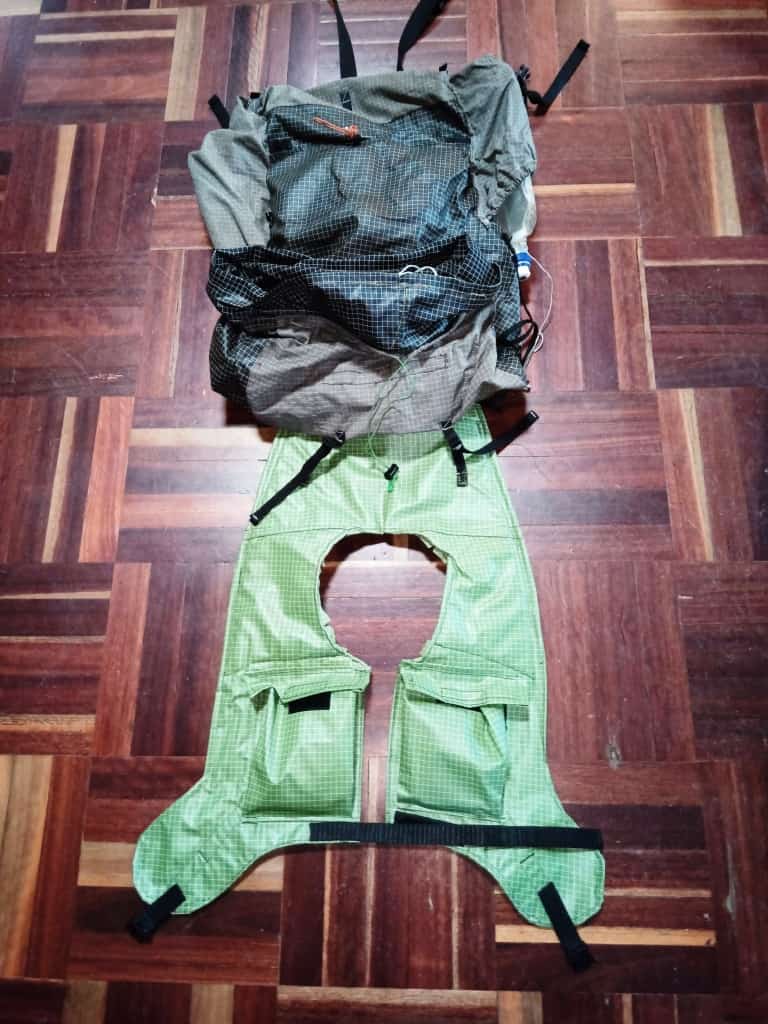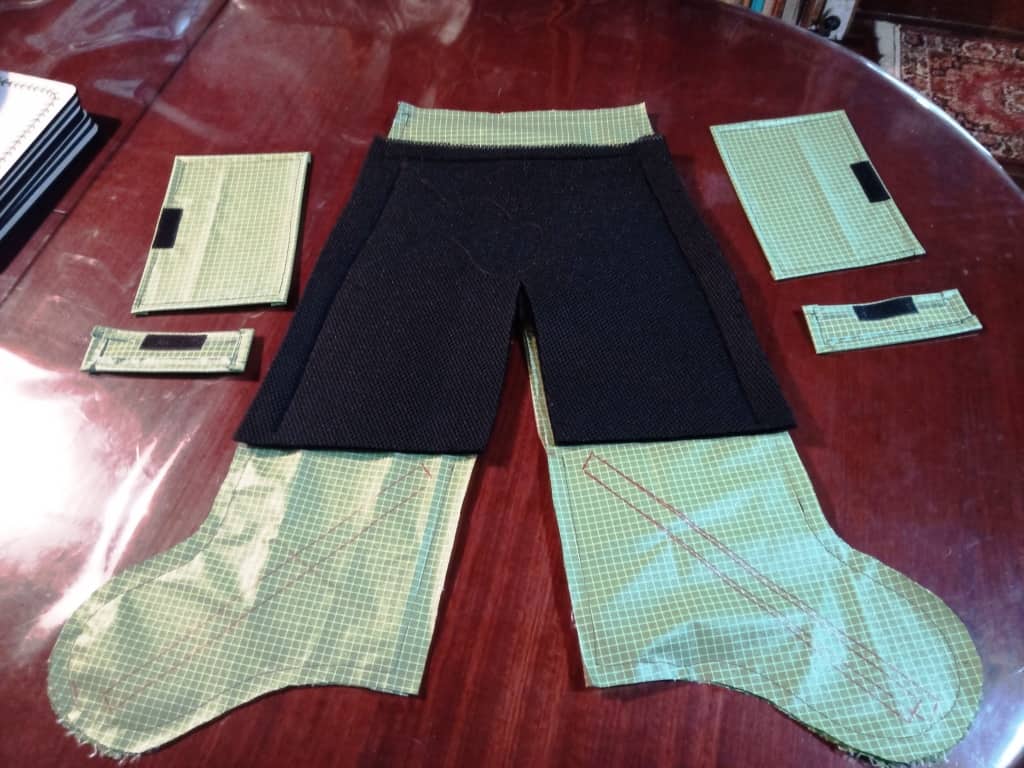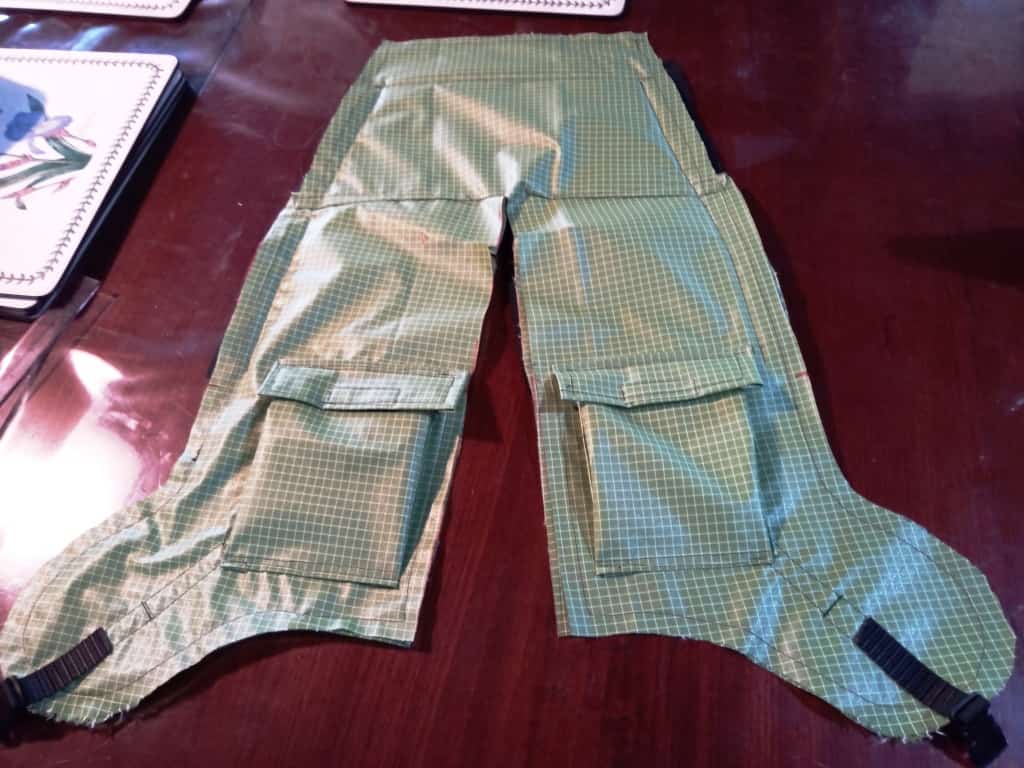For years I have been quite dissatisfied with backpack straps. They place a quite unnecessary and undue strain on a small area of the shoulders. It seems to me that for horses this problem was solved back in circa the C14th with the invention of the horse collar and associated hardware to allow a horse to pull a heavy load without destroying the horse.
Most pack manufacturers have decided that ‘transferring the load’ (somehow) to the hips via a hip belt is the solution. It is not. That ‘solution’ only acts (rather like other forms of torture such as foot binding) to transfer the problem elsewhere without solving it at all. A hip belt restricts movement and comfort in just a different sort of way, that is all.
When I was a lad I lived across the road from a World War 1 veteran (Mr Knight) who had (like Hitler, but on our side) been a motorcycle dispatch rider. One day he told me that he had once turned too quickly in front of a tank, fallen off his motorbike and been run over by the tank!
I was astonished that he had survived knowing that a tank weighed many tonnes. He rejoined that if he had been run over by a Morris Minor instead he would have been dead but being run over by a tank bore just the same relationship to a Morris Minor as having your foot stepped on by an elephant as compared with a woman wearing stiletto heels (which were fashionable at the time).
I was only a kid remember, so right then I had my first lesson in the elementary physics of pressure (per square inch – as it was then). Divide the weight of the elephant/woman by the surface area of the foot/heel and you will see that the stiletto heel exerts many more times the pressure per square inch – so it is unendurable – though I still don’t want an elephant to stand on my foot! The tank did break some bones actually but he made a full recovery.
That is exactly the problem with backpack straps – too great a pressure per square inch of surface area. The solution is to distribute that weight (pressure) over a much larger surface area. Essentially I had to invent a horse collar for human beings which would distribute the load over a much larger surface area.
First of all most all backpack straps are (far) too narrow. I am only about 5′ 7″ whilst my wife Della is only 5′ exactly, yet both of us could use straps (I have measured us) which are 5″ wide which is a good 2″ wider than most every backpack strap around! Just making that change is going to reduce the pressure by over 40% where the straps pass over the shoulder.
But it gets worse: I have spent an inordinate amount of my life humping bags of various kinds: wheat, potatoes, superphosphate, etc. They used to be four bushel bags when I was a teenager (50 kg+) but they gradually shrank them down to three bushels (approx 40kg), whilst now they have made them a feminine 1.5 bushels only (20kg) such that you have to pick one up in each hand (inconvenient) else you will be loading them all day! Apparently this is ‘worksafe’.
When you carry a bag (eg of grain) any distance you balance it across the back of your shoulders and up onto the back of the neck as well as the weight spilling onto the tops of your shoulders. I used to handle 50kg bags at a rate of just over 1 per second – catching them from a chute then hurling them into place whilst loading sixty tonne railway carriages with them when I was twenty. Eight straight hours a day. That’s a lot of tonnes a day if you are good at maths, and is just one example of what I mean by saying, I have humped a lot of bags.
The point is you would never attempt to carry a 40-50kg bag by two straps run over your shoulders. If you were doing that to a horse you would be prosecuted by the RSPCA – but we are only men (or women) so it doesn’t count as cruelty for us!
The load needs also to be distributed across the back of the shoulders and up onto the back of the neck (but not so far as where it begins to bend). It also needs to be distributed onto the top of the chest (not the neck) and not the diaphragm (as that would affect breathing). If you think about all that area you will see that it is more than twenty times the area that your backpack straps are pressing on. If you can distribute that same weight (more or less) equally over that much larger area you will scarcely feel it at all – at least such was my reasoning. And so indeed it turned out to be.
I recently ‘reinvented’ the backback incorporating this and several other ideas but unfortunately I made the first prototype just a little small (for me) for a multi-day trip, so rather than remaking the whole thing as against a short walk we were recently doing (The Joy of Closed Roads) I decided to just make a new ‘harness’ for (what is left of) my old Zpacks Blast Pack after my many modifications.
That’s what you see in the photo below (in 4.8 oz Dyneema fabric – overkill actually):

All the surface area of fabric you can see in the photo from where the ‘load-lifter’ straps are sewn on down to the tops of the pockets is transferring weight to your body. As you can see that is much more than twenty times the ‘normal’ surface area. Let me tell you it was enormously more comfortable.
This is a prototype. When I have finalised the design I will be incorporating it into a pack pattern which you will be able to download (soon). I had envisaged cutting the whole thing out of one (doubled) piece of fabric (as I did here). The tuck or dart at the top of the shoulders (together with the angle it is sewn onto the pack) would make the whole thing ‘fit’ the angle of the shoulders.
Here are a couple of more ‘works in progress’ snaps:


Those two things were true but the front needed to be a little wider (once there was a reasonable load on board) so I do need to use three pieces of fabric ((joined where the dart is) so that it closes better at the front. The pockets need to be bigger and to have bigger flaps. The chest strap needs to be higher (maybe two?) and close with a buckle. Trial and error.
However, this new method of suspension is going to be wonderfully superior to what is fitted currently to all packs. I expect it will not be long before manufacturers begin to copy it as they have with many other of my DIY ideas , but I cannot afford to register patents or designs so I will just say, ‘You saw it first here’ and leave it at that. Imitation is the sincerest from of flattery.
I notice that there is a nice flat space on this suspension across the back of the shoulders which will be good for a (2 litre) water bottle pocket which will only need a very short piece of tubing indeed to convey the water to your mouth. I expect I will incorporate that into my next model (thus freeing up a side pocket for something else). I will also need to make it out of a more breathable fabric or a combination of the mesh + webbing so that it does not sweat you up.
The other major problem with (most ) packs is that they demand the human body conform to them rather than them conforming to the human body. I have also solved this one but it will be the subject of a future post: The Backpack Reinvented (already alluded to and coming soon) where I make a backpack which actually ‘fits’ the shape of your body and whose centre of gravity is such that it just wants to sit on your bottom without a hip belt (though a very light waist belt – 15 grams – helps keep it in place).
You will be able to make the whole backpack (including suspension system) out of about a metre of pack fabric (plus a few replaceable) buckles, some webbing and some breathable mesh – around $20. It should take you about half a day and should last you most of the rest of your life, be more comfortable than anything you have used to date – and weigh about 400 grams.
Just don’t hold your breath. I have other jobs to do. For example, I have enormously speeded up the website recently if you have been noticing. It is now loading twice as fast – about a quarter of a second n desktop at 40 megs per second internet speed.
See Also:
